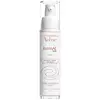What's inside
What's inside
 Key Ingredients
Key Ingredients

 Benefits
Benefits

 Concerns
Concerns

 Ingredients Side-by-side
Ingredients Side-by-side

Water
Skin ConditioningCaprylic/Capric Triglyceride
MaskingParaffinum Liquidum
EmollientGlyceryl Stearate
EmollientPEG-100 Stearate
Squalane
EmollientPropylene Glycol
HumectantMicrocrystalline Wax
Emulsion StabilisingPEG-40 Hydrogenated Castor Oil
EmulsifyingBHT
AntioxidantCaprylyl Glycol
EmollientCarbomer
Emulsion StabilisingDisodium EDTA
Oleoyl Dipeptide-15
Skin ConditioningOleoyl Tetrapeptide-31
AntioxidantCI 17200
Cosmetic ColorantRetinal
Skin ConditioningTocopheryl Glucoside
EmollientTriethanolamine
BufferingWater, Caprylic/Capric Triglyceride, Paraffinum Liquidum, Glyceryl Stearate, PEG-100 Stearate, Squalane, Propylene Glycol, Microcrystalline Wax, PEG-40 Hydrogenated Castor Oil, BHT, Caprylyl Glycol, Carbomer, Disodium EDTA, Oleoyl Dipeptide-15, Oleoyl Tetrapeptide-31, CI 17200, Retinal, Tocopheryl Glucoside, Triethanolamine
Water
Skin ConditioningGlycerin
HumectantPropanediol
SolventTriheptanoin
Skin ConditioningC13-15 Alkane
SolventCoco-Caprylate/Caprate
EmollientCarbomer
Emulsion StabilisingFaex Extract
Skin ConditioningApricot Kernel Oil Polyglyceryl-6 Esters
EmollientSoy Amino Acids
Skin ConditioningPunica Granatum Seed Extract
Skin ConditioningCetyl Diglyceryl Tris(Trimethylsiloxy)Silylethyl Dimethicone
Emulsion StabilisingHydrolyzed Yeast Extract
Skin ConditioningOlivine Extract
Skin ConditioningDilinoleic Acid/Butanediol Copolymer
Cellulose
AbsorbentPhenoxyethanol
PreservativeSorbitan Oleate
EmulsifyingSodium Metabisulfite
AntioxidantRetinal
Skin ConditioningGuanosine
Skin ConditioningUracil
Skin ConditioningPolyacrylate Crosspolymer-6
Emulsion StabilisingC9-12 Alkane
SolventCaprylyl Glycol
EmollientPolyglyceryl-10 Dipalmitate
EmollientDipropylene Glycol
HumectantSodium Hydroxide
BufferingGlyceryl Polyacrylate
Tocopherol
AntioxidantPvm/Ma Copolymer
Emulsion StabilisingAdenosine Phosphate
Skin ConditioningCastor Oil/Ipdi Copolymer
Potassium Sorbate
PreservativeHexadecene
SolventSodium Benzoate
MaskingT-Butyl Alcohol
PerfumingWater, Glycerin, Propanediol, Triheptanoin, C13-15 Alkane, Coco-Caprylate/Caprate, Carbomer, Faex Extract, Apricot Kernel Oil Polyglyceryl-6 Esters, Soy Amino Acids, Punica Granatum Seed Extract, Cetyl Diglyceryl Tris(Trimethylsiloxy)Silylethyl Dimethicone, Hydrolyzed Yeast Extract, Olivine Extract, Dilinoleic Acid/Butanediol Copolymer, Cellulose, Phenoxyethanol, Sorbitan Oleate, Sodium Metabisulfite, Retinal, Guanosine, Uracil, Polyacrylate Crosspolymer-6, C9-12 Alkane, Caprylyl Glycol, Polyglyceryl-10 Dipalmitate, Dipropylene Glycol, Sodium Hydroxide, Glyceryl Polyacrylate, Tocopherol, Pvm/Ma Copolymer, Adenosine Phosphate, Castor Oil/Ipdi Copolymer, Potassium Sorbate, Hexadecene, Sodium Benzoate, T-Butyl Alcohol
Ingredients Explained
These ingredients are found in both products.
Ingredients higher up in an ingredient list are typically present in a larger amount.
Caprylyl Glycol is a humectant and emollient, meaning it attracts and preserves moisture.
It is a common ingredient in many products, especially those designed to hydrate skin. The primary benefits are retaining moisture, skin softening, and promoting a healthy skin barrier.
Though Caprylyl Glycol is an alcohol derived from fatty acids, it is not the kind that can dry out skin.
This ingredient is also used as a preservative to extend the life of products. It has slight antimicrobial properties.
Learn more about Caprylyl GlycolCarbomer is a polymer of acrylic acid. Its main role is to create a gel consistency.
A high amount of carbomer can cause pilling or balling up of products. Don't worry, most products contain 1% or less of carbomer.
Retinal is a form of retinoid. Retinoids are the gold-standard class of anti-aging ingredients.
Retinal has many benefits as other retinoids: improve skin texture, reduce large pores, reduce the effects of aging, reduce the visibility of dark spots, heal scars, and fight acne.
Studies show retinal may work at a faster rate than retinol due to its structure.
All retinoids have to be converted into retinoic acid before starting to work. Some retinoids take several steps of conversion before binding. Retinal is only one step away, making it more potent.
Like other retinoids, retinal may be irritating. It is best to ease into using this ingredient frequently.
Using the 'ramp up' method, start by using retinol once a week. This gives your skin time to adjust and decrease irritation. Once you feel ready, you can slowly increase the frequency of retinol use.
Using retinoids will increase sun-sensitivity in the first few weeks of use. Though studies show retinoids increase your skin's natural SPF with continuous use, it is best to always wear sunscreen and sun-protection.
Learn more about RetinalWater. It's the most common cosmetic ingredient of all. You'll usually see it at the top of ingredient lists, meaning that it makes up the largest part of the product.
So why is it so popular? Water most often acts as a solvent - this means that it helps dissolve other ingredients into the formulation.
You'll also recognize water as that liquid we all need to stay alive. If you see this, drink a glass of water. Stay hydrated!
Learn more about Water